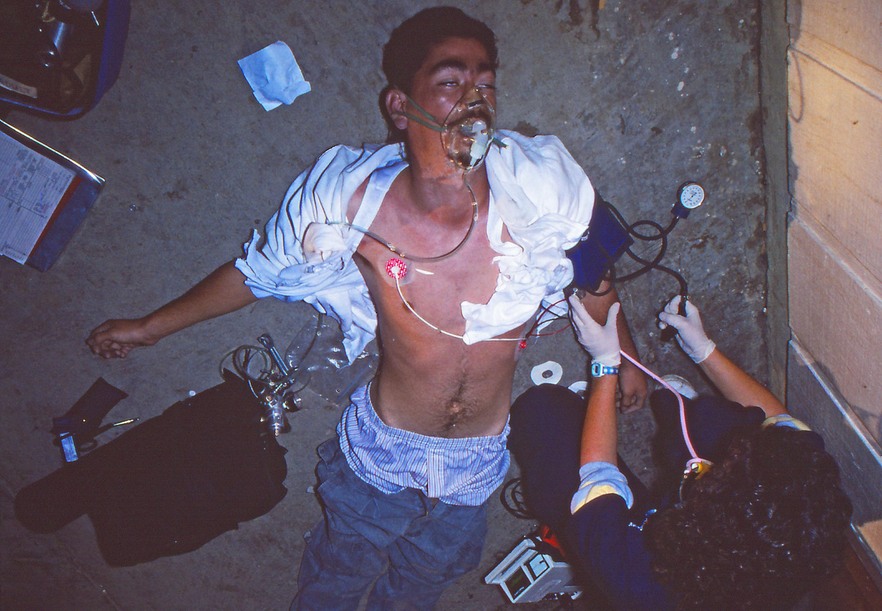

As the only town in Westlands Water District (WWD), the largest private water district in the United States, Huron serves one function: as a giant farm labor exploitation camp and labor reservoir for the mega-farms that spread across the west side of the San Joaquin Valley. Huron doesn't have a high school, or Burger King, or a newspaper. No hospital, pharmacy, internet cafe, or Chamber of Commerce. Not even a blinking red light stops motorists on Lassen Avenue, aka highway 168, the town's main thoroughfare. Huron does have plenty of bars, three rival gangs, and plenty of drugs. Located halfway between San Francisco and Los Angeles, Huron is a convenient transit point for drugs. Everything is available, including amphetamines – “speed.” Such drugs make dollars and sense for field hands cutting head after head of lettuce from a stooped position day after day for a piece-rate and hourly pay. This field hand has passed out from a black tar heroin overdose on the sidewalk in front of the El Rancho. EMS is trying to revive him
The Mean Streets of Huron
Richard Street | California, United States
Photographer: Richard Street
Exhibit Title: The Mean Streets of Huron
Location: California, United States
I stumbled into this story in 1986, at Kesterson National Wildlife refuge, near Los Banos, CA, after photographing ducks, geese, and other water birds hatched with brains outside their heads, two beaks, and missing body parts or parts where they shouldn't be. Selenium washed out of San Joaquin Valley farms by massive, endless irrigation had poured into an uncompleted drainage canal that ended a few miles south of Los Banos. Curious about the source of the tainted water, I began searching the agricultural system that had produced this catastrophe. On that journey, I discovered an even greater human catastrophe in Huron, an isolated and claustrophobic farm town with no McDonalds, no movie theater, no high school. Huron didn't have a lot of things most towns take for granted. Essentially a giant labor camp for farmers in Westlands Water District, the largest private water district in the United States, Huron was the poorest town in California, in the richest agricultural county in the world.
Every March and November, when Huron produces 90 percent of all the lettuce in the United States, the population expands from 6,000 to nearly 12,000. Most of the influx consists of single, transient men who follow the lettuce circuit. Stranded in this increasingly impoverished, dysfunctional farm town, they make do in one of five labor camps, dozens of derelict trailers, countless garage barracks, and even the bushes. Vividly underscoring the huge and widening gap between rich and poor in rural California, Knife Fight City caps a multi-volume, multi-decadeeffort uniting scholarship, literary journalism, and social documentary photography.
By questioning the over- dependence on industrialized, petro-agriculture and scrutinizing its consequences, I aim at heating up the debate about the nature of agribusiness,nudge food production toward a more humane and sustainable system, put a human face on a situation that all too often is reduced to statistics and bar graphs, andprovide a model thatencourages academics to adopt a broadened and more engaged approach to scholarship.
California Rural Legal Assistance
https://www.streetshots.org
streetshots@aol.com
Make Comment/View Comments